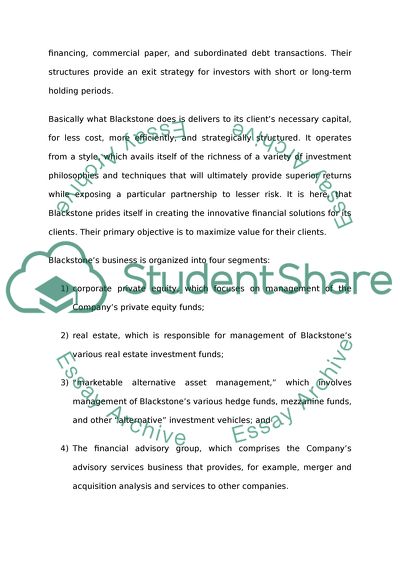Cite this document
(“The Structure and Business of Blackstone Essay Example | Topics and Well Written Essays - 4000 words”, n.d.)
Retrieved from https://studentshare.org/finance-accounting/1396853-are-private-equity-buyouts-in-the-best-interest-of
Retrieved from https://studentshare.org/finance-accounting/1396853-are-private-equity-buyouts-in-the-best-interest-of
(The Structure and Business of Blackstone Essay Example | Topics and Well Written Essays - 4000 Words)
https://studentshare.org/finance-accounting/1396853-are-private-equity-buyouts-in-the-best-interest-of.
https://studentshare.org/finance-accounting/1396853-are-private-equity-buyouts-in-the-best-interest-of.
“The Structure and Business of Blackstone Essay Example | Topics and Well Written Essays - 4000 Words”, n.d. https://studentshare.org/finance-accounting/1396853-are-private-equity-buyouts-in-the-best-interest-of.


